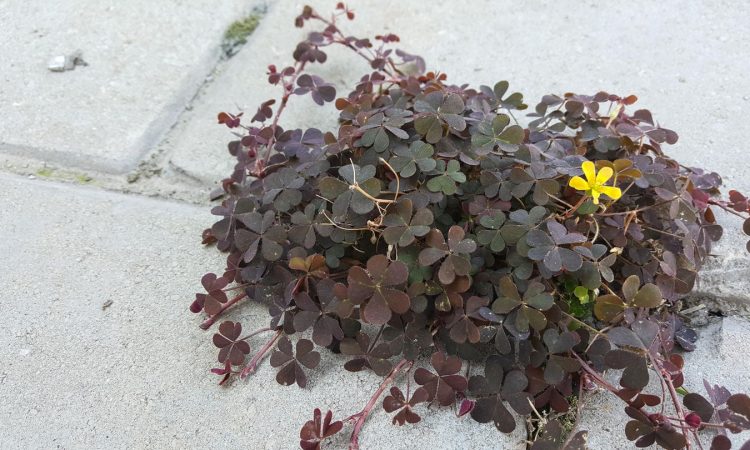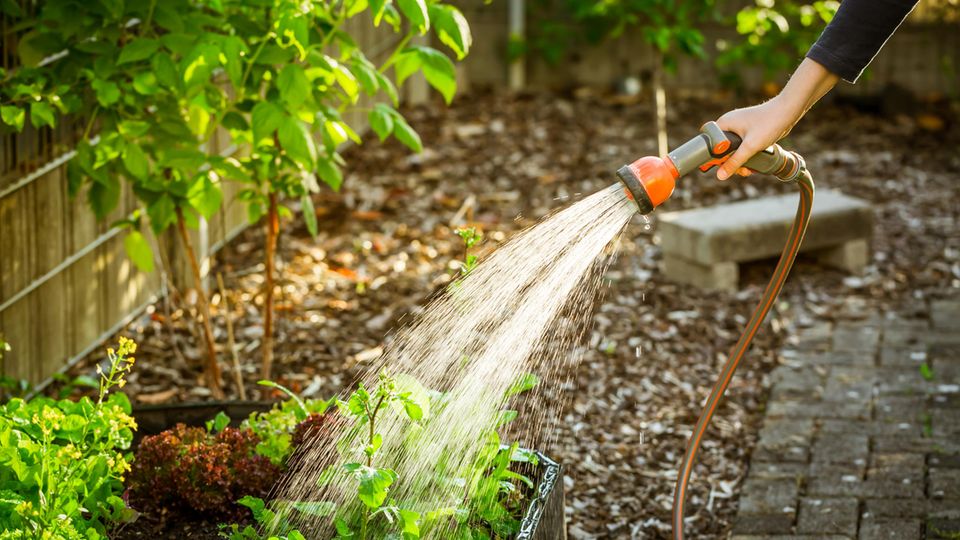
Stubborn plant
Between paving stones, in flower pots or on the lawn: What helps against wood sorrel?
It is a master at spreading over large areas: the wood sorrel
Wood sorrel is a prime example of how a non-native weed can optimally adapt to its new environment: The plant, which originates from the Mediterranean region, survives longer dry periods without any problems and spreads rapidly – if it is not stopped.
Horned wood sorrel (Oxalis corniculata) is a master at sowing itself – and also receives animal support: as soon as the plant has formed its yellow flowers, it flings the ripe seeds meters away. Some of them are then carried on by industrious ants. In addition, the so-called neophyte (a non-native species) is not affected by the increasingly hot summers in Germany due to its Mediterranean origin. If it does not rain for a longer period of time, the clover dries out on the surface but sprouts again as soon as the soil becomes moist again. Although insects find wood sorrel quite tasty, it unfortunately displaces native plants. Apart from that, the wild growth even proliferates in paving joints, flower pots or on the lawn. We’ll tell you how you can curb this stubborn plant.
Removing wood sorrel from (flower) beds
Wood sorrel is often introduced through the purchase of new potted plants. As a result, it either spreads directly in the flower pot or in the beds after the new plants have been repotted. As the pesky weed moves above and below ground, you need to act quickly – ideally before the clover starts to flower and self-seed: as soon as you discover the red-brown leaves of wood sorrel in your (flower) beds, you should remove the plant together with its deep-seated roots. You can use special tools such as a weed cutter or a rake can be helpful.
Tip: Use so-called ground cover plants against weeds. They form a natural carpet of plants that suppresses unwanted wild growth.
Removing wood sorrel from paving joints
This stubborn weed has a bad habit of growing everywhere – even in paving joints. To remove wood sorrel from between the paving stones, you can use a manual or electric joint scraper can be used. However, you will not usually get all of the deep roots. This is where the use of a electric weed killer which destroys the clover through the strong heat. Alternatively, you can also use a gas-powered weed burner It fights the annoying weeds with fire. However, it also releases a lot of carbon dioxide in the process.
Remove wood sorrel from the lawn
Unfortunately, seeds also get lost in the lawn, allowing wood sorrel to grow there. To combat the weed in the long term, it is recommended to strengthen the lawn. Not by garden lime, as the neophyte would also survive on calcareous soil. It is better to promote the growth of the grasses – by adding important nutrients that are not available in the commercially available lawn fertilizer can be found. Then allow the grass to grow for two weeks before mowing it and the clover down again. Afterwards, use a scarifier to remove unwanted weeds. And reseed fresh grass.
Tip: Remove the turf in the areas that are particularly densely overgrown with wood sorrel and add new topsoil. Keep the soil moist afterwards, as wood sorrel does not like wet soil.
The use of herbicides on paved paths is prohibited in Germany. On private green spaces and in (flower) beds, the chemical weed killers can be used, but these not only attack the wood sorrel, but also the plants growing around it. It is therefore not advisable to use them. Better suited for the control of wood sorrel are biological weed killers based on acetic acid. However, they only destroy the wild growth on the surface – the underground root system remains and can therefore sprout again.


